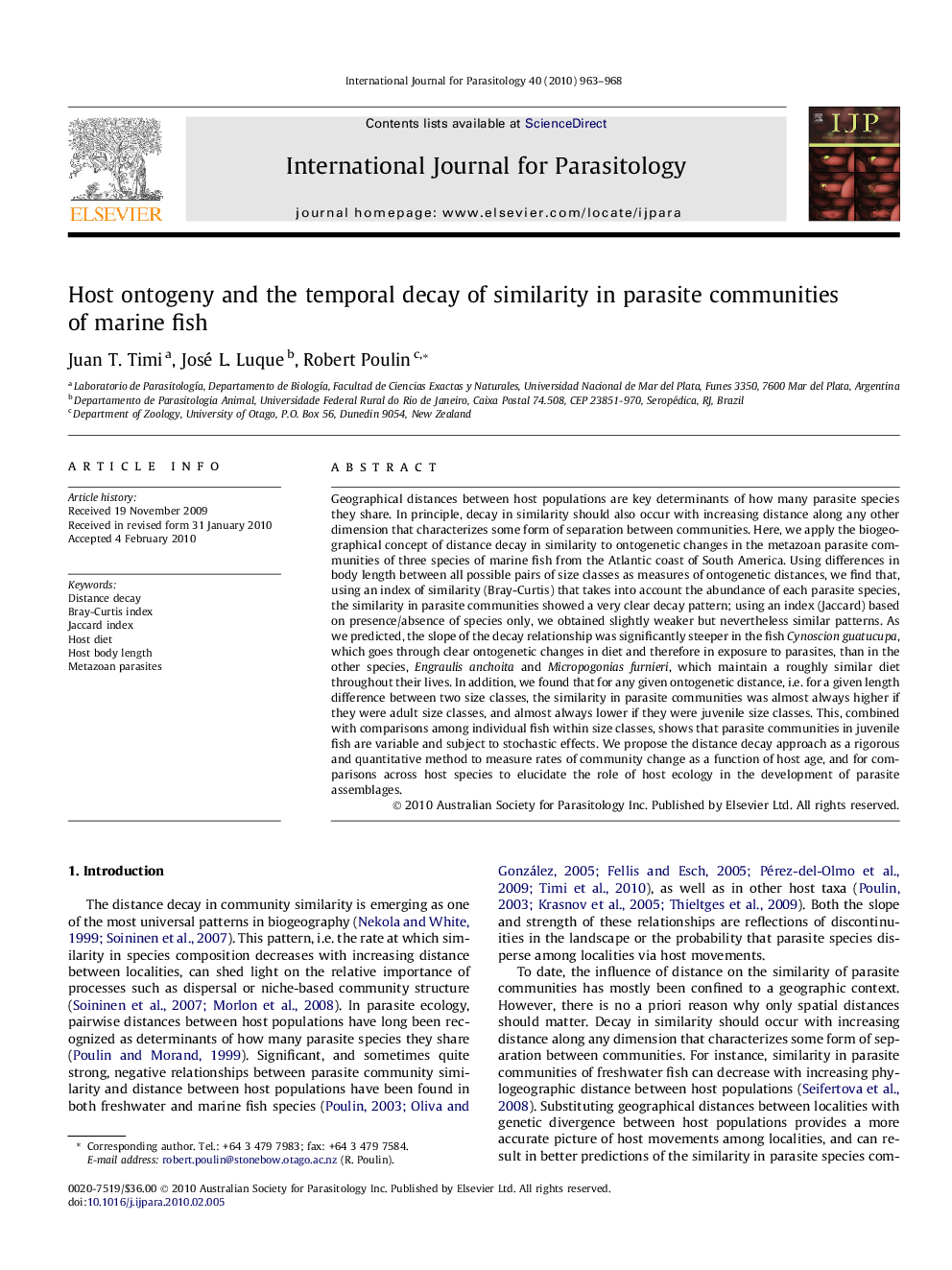| کد مقاله | کد نشریه | سال انتشار | مقاله انگلیسی | نسخه تمام متن |
|---|---|---|---|---|
| 2436436 | 1107309 | 2010 | 6 صفحه PDF | دانلود رایگان |

Geographical distances between host populations are key determinants of how many parasite species they share. In principle, decay in similarity should also occur with increasing distance along any other dimension that characterizes some form of separation between communities. Here, we apply the biogeographical concept of distance decay in similarity to ontogenetic changes in the metazoan parasite communities of three species of marine fish from the Atlantic coast of South America. Using differences in body length between all possible pairs of size classes as measures of ontogenetic distances, we find that, using an index of similarity (Bray-Curtis) that takes into account the abundance of each parasite species, the similarity in parasite communities showed a very clear decay pattern; using an index (Jaccard) based on presence/absence of species only, we obtained slightly weaker but nevertheless similar patterns. As we predicted, the slope of the decay relationship was significantly steeper in the fish Cynoscion guatucupa, which goes through clear ontogenetic changes in diet and therefore in exposure to parasites, than in the other species, Engraulis anchoita and Micropogonias furnieri, which maintain a roughly similar diet throughout their lives. In addition, we found that for any given ontogenetic distance, i.e. for a given length difference between two size classes, the similarity in parasite communities was almost always higher if they were adult size classes, and almost always lower if they were juvenile size classes. This, combined with comparisons among individual fish within size classes, shows that parasite communities in juvenile fish are variable and subject to stochastic effects. We propose the distance decay approach as a rigorous and quantitative method to measure rates of community change as a function of host age, and for comparisons across host species to elucidate the role of host ecology in the development of parasite assemblages.
Figure optionsDownload high-quality image (59 K)Download as PowerPoint slide
Journal: International Journal for Parasitology - Volume 40, Issue 8, July 2010, Pages 963–968